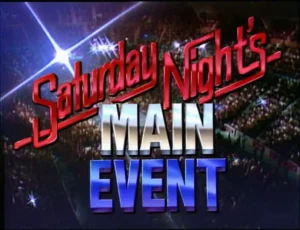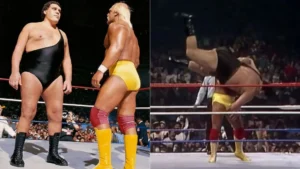Introduction
The Golden Era of WWE was a time like no other. It was the rise of WWE, In the 1980s and early 1990s, professional wrestling transcended its niche audience and became a mainstream sensation, capturing the hearts of millions. The larger-than-life characters, electrifying storylines, and groundbreaking events like WrestleMania catapulted WWE into pop culture. This era not only entertained fans but forever changed the landscape of sports entertainment, bridging the gap between wrestling, music, television, and movies.
What is the Golden Era of WWE?/The Rise Of WWE
The Golden Era of WWE refers to the period from the early 1980s to the early 1990s, during which WWE (then known as WWF – World Wrestling Federation) gained unprecedented popularity. It was during this time that WWE, under the visionary leadership of Vince McMahon, shifted from being a regional wrestling promotion to a global juggernaut. The rise of cable television, the advent of pay-per-view events, and the creation of WrestleMania all played crucial roles in defining this era.
The Wrestling Boom of the 1980s
The 1980s saw professional wrestling explode in popularity across the U.S. and beyond.It was the rise of WWE, WWE capitalized on the rising influence of cable TV, securing national exposure and introducing its charismatic wrestlers to households across the country. The entertainment-driven style of WWE, paired with the rise of pop culture icons like Hulk Hogan, made wrestling a staple of Saturday morning TV.

Cultural Impact of WWE’s Golden Era
The Rise of Wrestling on Television
Television was the driving force behind WWE’s expansion in the 1980s. Shows like Saturday Night’s Main Event brought WWE to primetime, capturing massive viewership and changing the perception of wrestling from a regional attraction to national entertainment. The company’s partnership with NBC was a significant move that gave wrestling unprecedented visibility. Making Pro wrestling Televised for the US citizen It set the rise of WWE

Impact on Children and Merchandise Explosion
WWE didn’t just capture adults; it hooked children as well. The colorful costumes, heroic characters, and memorable catchphrases made WWE a merchandising giant. From action figures and lunchboxes to video games and T-shirts, WWE’s reach extended beyond the ring into millions of households, creating a generation of fans.
Important Figures of WWE’s Golden Era
Hulk Hogan: The Face of Wrestling
No figure defined WWE’s Golden Era quite like Hulk Hogan. With his larger-than-life persona, signature catchphrases like “Whatcha gonna do, brother?” and his iconic matches, Hogan became the symbol of professional wrestling. His feud with Andre the Giant and his electrifying presence in the ring made him a household name. He became the top star during the rise of WWE

“Macho Man” Randy Savage: The Charismatic Performer
Randy Savage, known for his raspy voice, colorful outfits, and explosive athleticism, was a fan favorite. His rivalry with Hulk Hogan and his unforgettable match with Ricky Steamboat at WrestleMania III are among the most cherished moments in wrestling history.

Andre the Giant: The Eighth Wonder of the World
Andre the Giant was more than just a wrestler; he was a legend. Standing at 7’4” and weighing over 500 pounds, Andre’s sheer size and presence made him a global sensation. His match with Hulk Hogan at WrestleMania III, where Hogan bodyslammed the giant, is an iconic moment that helped define the Golden Era.

Rowdy Roddy Piper: The Ultimate Villain
Roddy Piper was the villain fans loved to hate. His wild antics, sharp wit, and in-your-face promos made him one of wrestling’s greatest antagonists. Piper’s rivalries with Hulk Hogan and Mr. T were central to the success of the early WrestleManias.

The Ultimate Warrior: The Iconic Powerhouse
The Ultimate Warrior, with his intense energy and unique style, quickly became one of the most popular stars of the Golden Era. His victory over Hulk Hogan at WrestleMania VI remains one of the most unforgettable moments in WWE history.

Vince McMahon: The Mastermind Behind the Revolution
Behind all the in-ring action was Vince McMahon, the mastermind who revolutionized the wrestling industry. McMahon’s vision to take WWE from a regional to a global enterprise laid the foundation for the Golden Era. His willingness to innovate, from promoting celebrity involvement to creating pay-per-view events like WrestleMania, was key to WWE’s success.

The Birth of WrestleMania
WrestleMania, WWE’s flagship event, debuted in 1985 and quickly became the Super Bowl of professional wrestling. With celebrity involvement, huge matches, and unforgettable moments, WrestleMania helped solidify WWE’s place in popular culture. It was the main reason behind the rise of WWE.

How WWE Transformed TV Programming
WWE’s partnership with networks like NBC and USA Network brought wrestling into millions of homes. The accessibility of wrestling on television made it a fixture in the lives of fans and turned wrestlers into global superstars.
Influence of Music and Celebrities
Cyndi Lauper and the Rock ‘n’ Wrestling Connection
The Rock ‘n’ Wrestling Connection brought music and wrestling together. Cyndi Lauper’s involvement, along with her memorable appearances on WWE programming, helped introduce wrestling to a new audience and cement its place in the cultural zeitgeist.
Mr. T’s Role in Bridging Entertainment and Wrestling
Mr. T’s participation in the first WrestleMania alongside Hulk Hogan was a game-changer. His star power brought wrestling further into the mainstream, making it cool to be a wrestling fan.

The Expansion of WWE Beyond the U.S.
WWE’s popularity wasn’t limited to the U.S. The Golden Era saw WWE programming expand internationally, with fans from Canada, the UK, and beyond tuning in to watch their favorite stars. This global reach set the stage for WWE to become the international brand it is today. It set the foundation for the rise of WWE.
Revolutionizing the Wrestling Business
Introduction of Pay-Per-View (PPV)
One of the most significant innovations during the Golden Era was the introduction of pay-per-view events. WrestleMania was the first PPV event that drew millions of viewers, setting a precedent for future revenue-generating shows like SummerSlam and Royal Rumble.
The Syndication of WWE Programming
Through syndication, WWE made its programming available on a wide range of local television stations, ensuring that fans across the country could access the action. This method of distribution was instrumental in WWE’s nationwide expansion.
Memorable Matches of the Golden Era
Hulk Hogan vs. Andre the Giant (WrestleMania III)
This match is arguably the most iconic in WWE history. Hulk Hogan bodyslamming Andre the Giant in front of 93,000 fans at the Pontiac Silverdome symbolized the height of wrestling’s Golden Era. This was during the rise of WWE.

Macho Man Randy Savage vs. Ricky Steamboat (WrestleMania III)
Widely regarded as one of the greatest matches of all time, this bout showcased the athleticism and storytelling that defined the Golden Era. Savage and Steamboat delivered a technical masterpiece that still influences wrestlers today.

The Ultimate Warrior vs. Hulk Hogan (WrestleMania VI)
The clash between two fan favorites at WrestleMania VI was an epic showdown that saw the Ultimate Warrior defeat Hulk Hogan. This passing-of-the-torch moment was one of the most emotional highlights of the Golden Era.

Legacy of the Golden Era: How It Shaped Modern Wrestling
The Golden Era laid the foundation for what WWE would become. It was the rise of WWE, the larger-than-life characters, iconic matches, and innovative business strategies set the stage for the wrestling boom of the late 1990s. Without the success of this period, the Attitude Era and modern WWE wouldn’t exist.
How the Golden Era Came to an End
By the early 1990s, the Golden Era began to fade as new stars emerged and the wrestling industry evolved. The rise of competitors like WCW and the shift toward edgier programming marked the end of the Golden Era, but its impact is still felt today.
Conclusion
The Golden Era of WWE was a time of rise of WWE, cultural crossover, and unforgettable moments. It transformed professional wrestling from a regional sport into a global phenomenon, forever altering the entertainment landscape. The legends of this era continue to inspire new generations of fans and wrestlers alike.
Watch Other wrestling blog here.





Pingback: WWE's Ruthless Aggression Era|7 Top wrestlers| before PG era